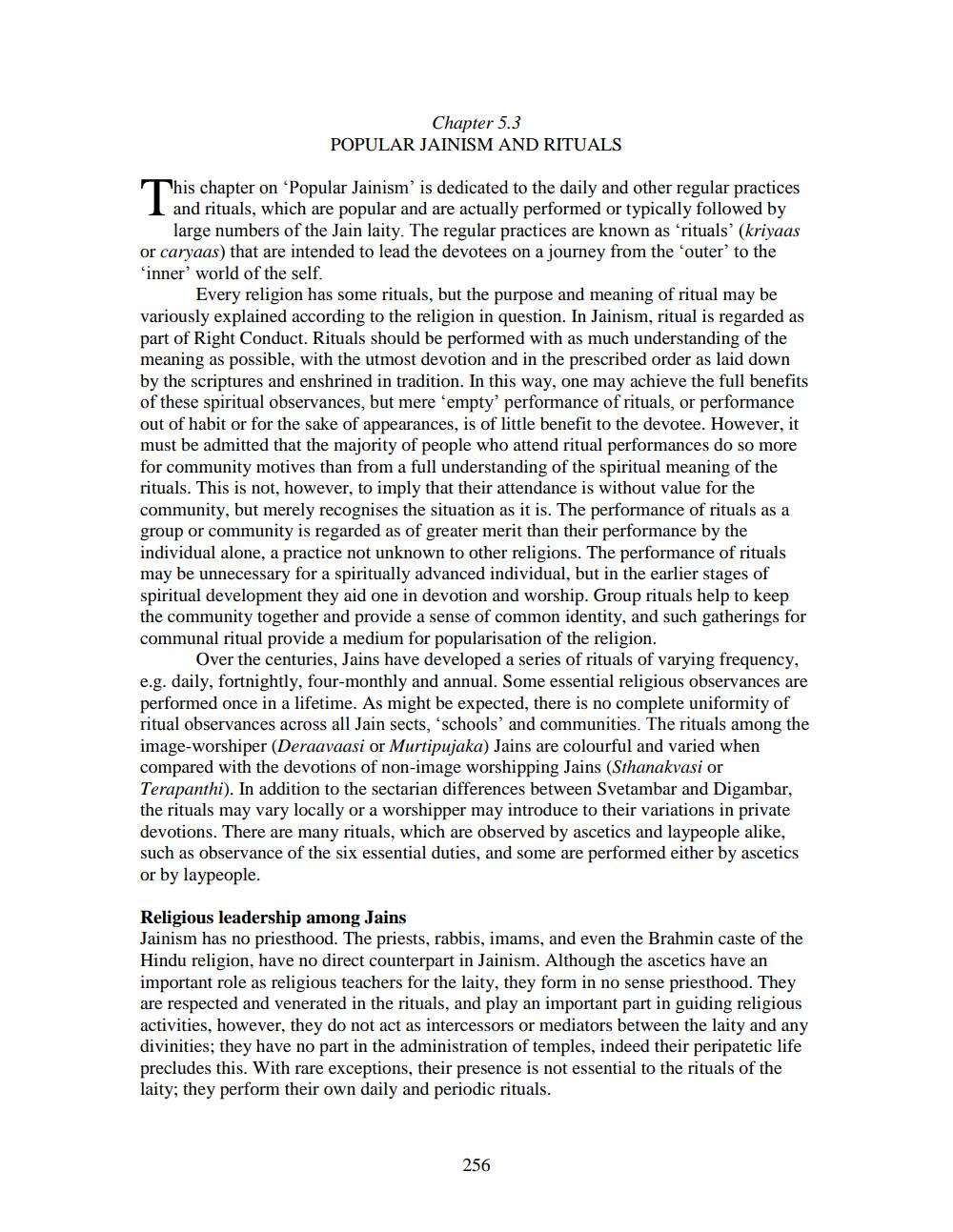________________
Chapter 5.3 POPULAR JAINISM AND RITUALS
This chapter on 'Popular Jainism' is dedicated to the daily and other regular practices I and rituals, which are popular and are actually performed or typically followed by
large numbers of the Jain laity. The regular practices are known as 'rituals' (kriyaas or caryaas) that are intended to lead the devotees on a journey from the 'outer' to the ‘inner' world of the self.
Every religion has some rituals, but the purpose and meaning of ritual may be variously explained according to the religion in question. In Jainism, ritual is regarded as part of Right Conduct. Rituals should be performed with as much understanding of the meaning as possible, with the utmost devotion and in the prescribed order as laid down by the scriptures and enshrined in tradition. In this way, one may achieve the full benefits of these spiritual observances, but mere `empty' performance of rituals, or performance out of habit or for the sake of appearances, is of little benefit to the devotee. However, it must be admitted that the majority of people who attend ritual performances do so more for community motives than from a full understanding of the spiritual meaning of the rituals. This is not, however, to imply that their attendance is without value for the community, but merely recognises the situation as it is. The performance of rituals as a group or community is regarded as of greater merit than their performance by the individual alone, a practice not unknown to other religions. The performance of rituals may be unnecessary for a spiritually advanced individual, but in the earlier stages of spiritual development they aid one in devotion and worship. Group rituals help to keep the community together and provide a sense of common identity, and such gatherings for communal ritual provide a medium for popularisation of the religion.
Over the centuries, Jains have developed a series of rituals of varying frequency, e.g. daily, fortnightly, four-monthly and annual. Some essential religious observances are performed once in a lifetime. As might be expected, there is no complete uniformity of ritual observances across all Jain sects, 'schools' and communities. The rituals among the image-worshiper (Deraavaasi or Murtipujaka) Jains are colourful and varied when compared with the devotions of non-image worshipping Jains (Sthanakvasi or Terapanthi). In addition to the sectarian differences between Svetambar and Digambar, the rituals may vary locally or a worshipper may introduce to their variations in private devotions. There are many rituals, which are observed by ascetics and laypeople alike, such as observance of the six essential duties, and some are performed either by ascetics or by laypeople.
Religious leadership among Jains Jainism has no priesthood. The priests, rabbis, imams, and even the Brahmin caste of the Hindu religion, have no direct counterpart in Jainism. Although the ascetics have an important role as religious teachers for the laity, they form in no sense priesthood. They are respected and venerated in the rituals, and play an important part in guiding religious activities, however, they do not act as intercessors or mediators between the laity and any divinities; they have no part in the administration of temples, indeed their peripatetic life precludes this. With rare exceptions, their presence is not essential to the rituals of the laity; they perform their own daily and periodic rituals.
256




